-
-
products
-
resources
-
support
-
company
-
Login
-
ReviverSoft
Answers
Get Answers from our
Community of Computer Experts-
Home
-
Resources
-
Questions & Answers
- YouTube sound was not working.now no sound at all from speakers.
YouTube sound was not working.now no sound at all from speakers.
 i like this question0 Like ItFollowI know it's A speaker problem but How to check it and make it working again.Operating System:Windows 10Answer this questionbest answerHi Sumit,
i like this question0 Like ItFollowI know it's A speaker problem but How to check it and make it working again.Operating System:Windows 10Answer this questionbest answerHi Sumit,
To automatically fix many types of sound problems, use the Microsoft Sound Troubleshooter.- Click Start
 , and then click Control Panel.
, and then click Control Panel. - Under System and Security, click Find and fix problems.Figure : Opening the troubleshooter
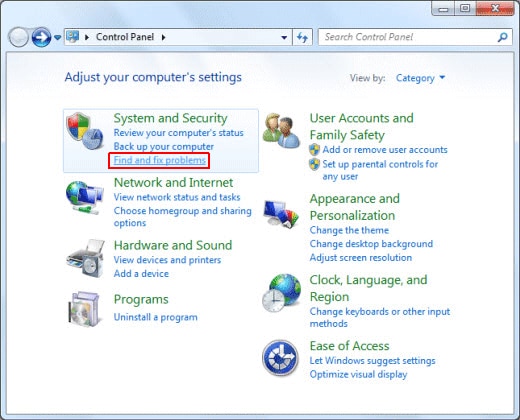
- The Troubleshoot computer problems page opens. Under Hardware and Sound, click Troubleshoot audio playback.Figure : Troubleshooting audio playback
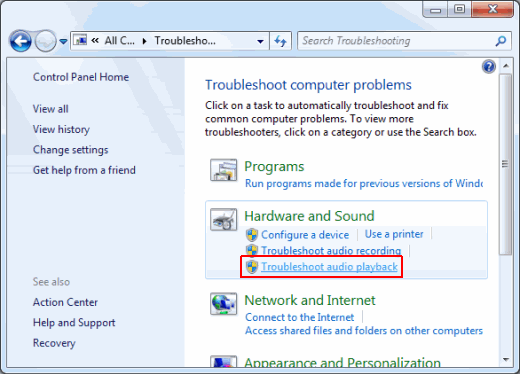
- The Playing audio troubleshooting page displays. Click Next to continue.Figure : Playing Audio troubleshooter

- Wait while the troubleshooter checks the computer for problems.Figure : Checking for audio problems
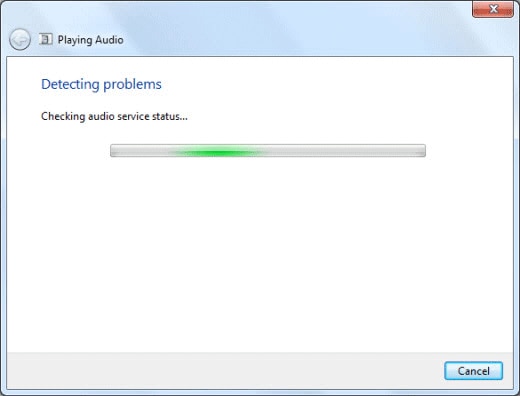
- Select the audio connection device you want to troubleshoot, such as speakers. Then click Next.Figure : Selecting a device to troubleshoot
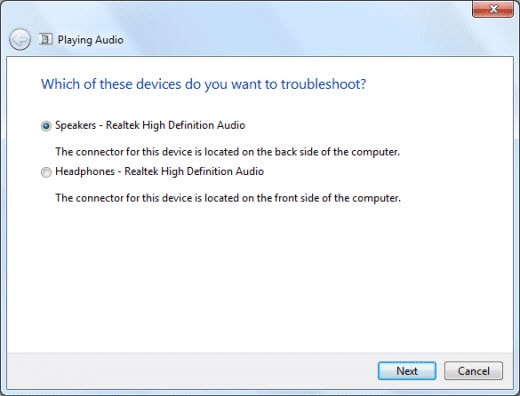
- Wait while the troubleshooter detects problems and makes changes.Figure : Detecting problems
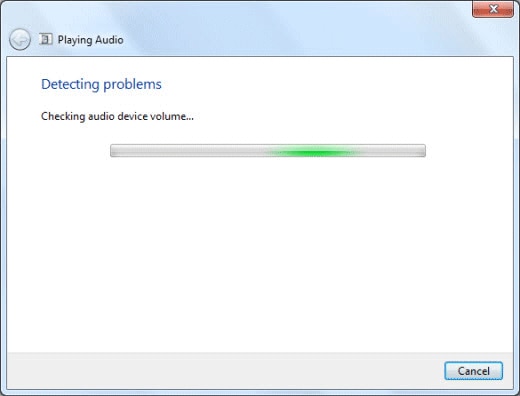
Fix 2: The volume setting for one or more sound devices might be disabled or set too low. There are several things that can change sound volume: the volume control knob for your speakers or monitor, Windows volume controls, and volume controls in sound software. If any of these volume controls are muted or set too low, the entire sound experience is affected. Use the following steps to adjust volumes to correct levels:NOTE:
For detailed information about the troubleshooting, click View detailed information.Click Close.Figure : Troubleshooting completed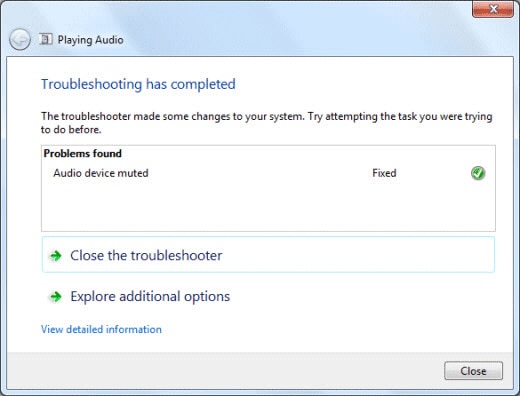
- If your powered speakers have a volume control knob, set it to halfway.Figure : Volume control knob for speakers (your speakers might be different)
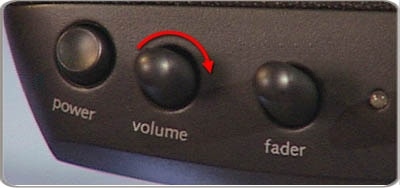 If you are using speakers that are built into your monitor, make sure sound is enabled for the monitor and volume is set to halfway. Adjust the sound settings for your monitor by using the buttons on the monitor and/or the on-screen menu. To find more specific information about using and adjusting your monitor speaker settings, see the support documentation that came with your monitor.
If you are using speakers that are built into your monitor, make sure sound is enabled for the monitor and volume is set to halfway. Adjust the sound settings for your monitor by using the buttons on the monitor and/or the on-screen menu. To find more specific information about using and adjusting your monitor speaker settings, see the support documentation that came with your monitor.
Figure : Volume and menu buttons on a monitor (your monitor might be different)
- Click Start
 , and then click Control Panel.
, and then click Control Panel. - Click Hardware and Sound. Under Sound, click Adjust system volume. The Volume Mixer window opens.Figure : Volume Mixer
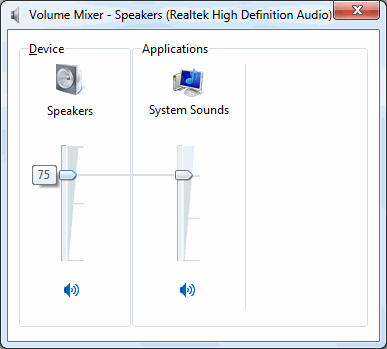
- Make sure the volume is not muted by looking at the square Mute buttons below the volume slider. If the button displays a small red circle, the volume is muted.If the volume is muted, click the Mute button to enable sound. The red circle on the speaker icon disappears when sound is no longer muted.Sound muted
Sound not muted 

- After verifying that the sound is not muted, drag the volume adjuster up until it is at 75%.
- To test, click the volume slider bar. If you hear a ding sound from all speakers, you are finished troubleshooting.Figure : Testing volume

If you still do not hear any sound, set your default speakers and test them.
- From the Windows Sound window, select Speakers, and then click Properties.Figure : Opening the Speaker Properties
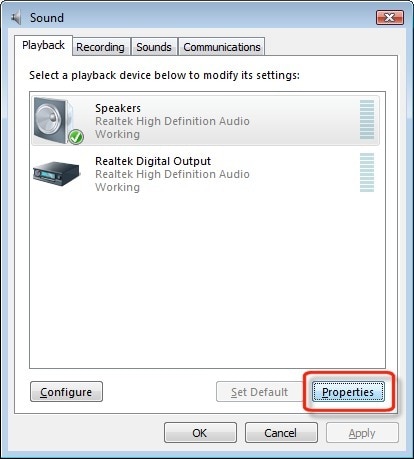
- The Speakers Properties window contains a list of color-coded connectors that corresponds to each pair of speakers. Use this information to determine which connector goes with the speaker pairs that you are using.Figure : Speakers Properties window for 7:1 Surround setup
 This example shown in the image is for a 7.1 Surround setup, where:
This example shown in the image is for a 7.1 Surround setup, where:- L R (green, Line Out) is for the front left and right speaker pair (the green connector, usually labeled Line out).
- RL RR (orange) is for the Rear-left and Rear-right speaker pair.
- C Sub (black) is for the Center or Subwoofer speaker.
- SL SR (gray), is for Side Left and Side Right speakers
- Make sure each speaker cable is connected to its corresponding connector on the back of the computer. The colors shown in the Speakers Properties window match the connector color on the computer.
- If you have 5.1 or greater speakers, connect the speaker cables to the speaker hardware (usually on the subwoofer). Then match the speaker cable to the connectors on the computer using the colors shown in the Speakers Property window.
- If any speaker cable connection changed, check for sound again using the steps in Set default speakers and test.
Play a sound. If sound problems continue, check for sound from plugged-in headphones.
- Connect to the Internet.
- Click Start
 , and type device manager into the Start Search field. Then click Device Manager in the Programs list.Device Manager opens.
, and type device manager into the Start Search field. Then click Device Manager in the Programs list.Device Manager opens. - Double-click Sound, video and game controllers.
Figure : Sound device in Device Manager
- Right-click the name of the audio device listed under Sound, video and game controllers.
- Select Update Driver Software.Figure : Update Driver Software selection in Device Manager
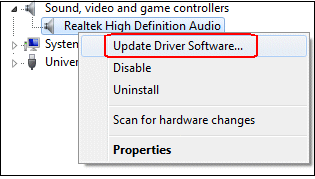
- Click Search automatically for updated driver software.Figure : How do you want to search for driver software

- Windows checks for and installs any updated drivers found. The Window displays whether the computer already has the latest available driver or if Windows was able to successfully update the audio driver.Figure : Windows has successfully updated your driver software
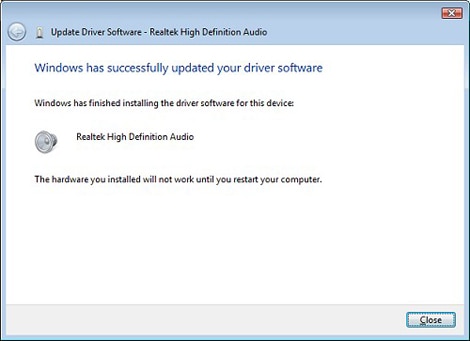
- If a window opens that asks you to restart the computer, restart the computer.
- Test for sound. If sound problems persist or no drivers could be found and installed, continue updating the audio driver through HP Support Assistant.
Regards,
Lokesh
There are no answers yet.
Welcome to Reviversoft Answers
ReviverSoft Answers is a place to ask any question you have about your computer and have it answered by the expert community.Post your question
Ask your question to the community nowSimilar questions
Show full questionmy laptop is windows 8 and all and my computer is a DV7 pravillonVIEW ANSWERS3Show full questionI changed my OS from Vista to windows 8 for speed reasons and i need to keep the OS as the same .i tried to update the driver but each time i try to update it windows says its already the best driver installed ?. Please help meVIEW ANSWERS1Show full questionHaving trouble with your PC?Complete a free PC scan using Driver Reviver now.DownloadStart Free Scan -
